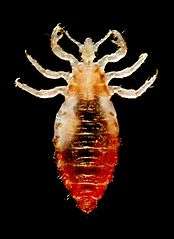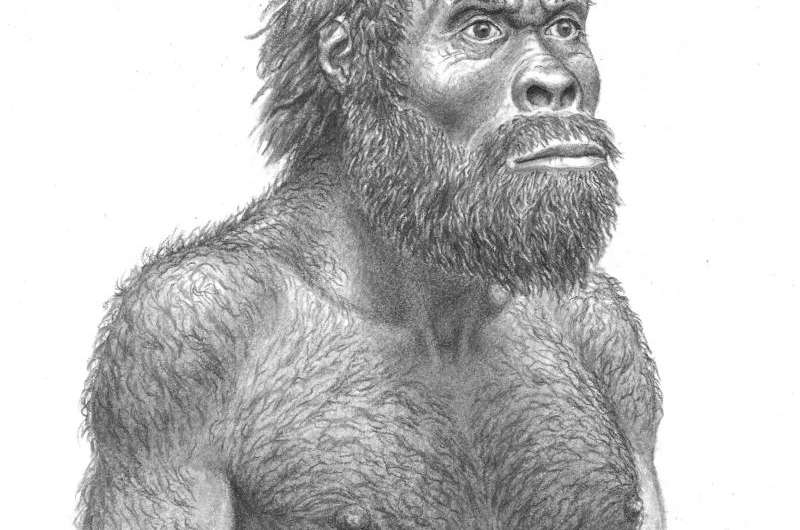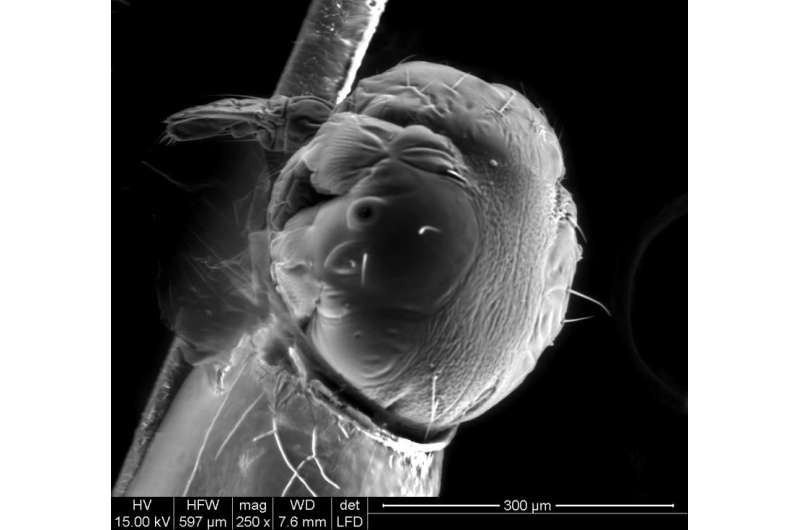A terrific article recently published in Molecular Biology and Evolution, "Alternative Splice in Alternative Lice," provides a compelling example of maximizing genome information – adaptation of the louse Pediculus humanus to the new habitat created when our ancestors invented clothing.
Head vs body lice
Many parents encounter head lice when their children are sent home from school with instructions to get rid of the horrible rice-krispie-like eggs ("nits") clinging to their scalp hairs. A good washing won't do it. Medication and clunky combs do very little alone. The sooner the poor parent realizes that meticulous nit-picking is the only solution, the sooner the nightmare ends.
But consider the louse's point of view.
Lice live on us so that they can drink our blood, with a little help from bacteria that provide the B vitamins needed to extract maximal nutrients from their meals. Head lice lay their eggs on our hair shafts, gluing them in place. These are the much more common variety. They don't carry disease, and are more of a colossal annoyance than anything else.
Body lice deposit their eggs in clothing seams, mostly in the armpits and waistline. The nymphs that hatch, looking like tiny adult lice, must move to the skin for their blood meals.
An infestation of body lice may cause an itchy rash if the host has an allergic reaction to the bites, but the tiny beasts can also spread disease—typhus, trench fever, and relapsing fever. Body lice aren't nearly as easy to acquire as the head lice that easily jump scalps when kids share hats. They're seen where people can't bathe or change clothing often enough – homelessness, combat, natural disasters. (Pubic lice, Pthirus pubis, are a different animal entirely and came from gorillas.)
Since we split from our shared ancestors with chimpanzees about six million years ago, until the invention of clothing about 170,000 years ago, lice enjoyed the vast landscapes of hairy hominins. So how did the insects cope with their shrinking turf?
Alternative splicing
Nitpicking isn’t easy
The two types of lice haven't (yet) separated into two species to suit their different habitats. They will mate under laboratory conditions, although not in the wild. The lice look alike, at least to us – the body ones are slightly larger.
The louse genome is small and the insect shares 90 percent of its genes with other insect species. Rounding up the usual suspects of evolutionarily-conserved genes, such as those that encode the cytochromes and ribosomal RNAs, found few distinctions between the two types of lice. But considering a genetic mechanism called alternative splicing revealed how lice access their genomes in different ways when confronted with starkly different habitats.
Back in 1978, when I was in grad school learning that genes are continuous stretches of protein-encoding DNA, the idea of and evidence for "genes in pieces" arose. This discovery was a game-changer in the history of genetics. At first thought an anomaly, we've since learned that in fact most genes come in pieces. Stretches called introns, which do not encode protein, lie between the protein-coding segments, called exons.
Genes mix and match exons by the removal of introns, a little like selecting outfits from a vast wardrobe. This mosaic make-up of genes facilitates rapid genetic change without permanently altering the genome.
Alternative splicing generates new versions of genes in two ways: introns can stay in when they should be jettisoned, or exons skipped. The discovery that exon skipping can counteract a disease-causing mutation has been harnessed to treat disease.
When our ancestors began to cover their nakedness, lice that had previously enjoyed the expanse of the human anatomy found themselves like forest dwellers plunked into a desert. Alternative splicing might have enabled the insects to adapt, according to the new study.
Cataloging genes
Araxi Urrutia from the University of Bath and colleagues from the Universities of Illinois, Notre Dame, and Massachusetts found alternative splicing in about a third of the louse's genes – 3,598 in either head or body lice, 1,415 just in head lice, and 2,183 just in body lice.
Credit: J. H. Matternes
The researchers looked first at categories of genes that might be expected to differ between head and body lice – those affecting immunity or reproduction. Immune system genes didn't differ in expression, but reproductive genes are indeed spliced differently. It makes sense that successfully laying eggs in the seams of fabric is a different skill than doing so along hair shafts.
Next the investigators took a more unbiased approach by identifying broad classes of genes based on function that are spliced differently in head and body lice. This time, they found major differences in development and in the nervous system.
Distinctions are eclectic. Differences in the lining of the developing ovary affect the relationship of the insect with its endosymbiont, the vitamin-providing bacteria that must survive the more sporadic blood meals that come with the shrinking habitat fabric foists on the insects. Differences in the development of the salivary glands enable body lice to spread the three infectious diseases to their hosts. And the same gene variants of the nervous system that establish the castes of social insects may foster the sensory and behavioral strategies necessary for body lice to survive on the "human clothing environment."
In social ants, bees, and termites, environmental factors regulate alternative splicing through methylation of regulatory regions of certain genes. Early in development these changes set into motion the nuanced phenotypes that sculpt castes. Might similar alternative splicing have enabled head lice to expand their range?
A nit clings to a hair shaft.
Given time and our continued tendency to wear clothes, will the head louse and body louse one day no longer be able to mate?
This paper illustrates why I love science. The work is beautiful in its logic. The researchers even posed an alternate hypothesis: that the stress of living on clothing causes a general upheaval of the alternative splicing process. But that wouldn't explain the consistent findings.
The very best science explains what we observe yet raises further questions – that's why the phrase "scientific proof" makes me cringe. The investigation of "alternative splice in alternative lice" also provides yet another glorious illustration of the adaptation that could lead to evolutionary change.
More information: "Alternative splice in alternative lice." Mol Biol Evol first published online July 13, 2015 DOI: 10.1093/molbev/msv151
Journal information: Molecular Biology and Evolution
Provided by Public Library of Science
This story is republished courtesy of PLOS Blogs: blogs.plos.org.

























